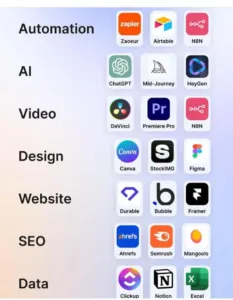Navigating the AI Toolkit Landscape: A Comprehensive Guide to Popular Frameworks
In the rapidly evolving field of artificial intelligence, having the right toolkit at your disposal is crucial. Here’s a breakdown of some of the most popular AI toolsets, each catering to specific needs:
1. TensorFlow:
– Purpose: Widely utilized for machine learning and deep learning applications.
– Strengths: Scalability, flexibility, and a vast community for support.
2. PyTorch:
– Purpose: A powerful framework for deep learning tasks.
– Strengths: Dynamic computational graph, ease of use, and strong support for research.
3. Scikit-learn:
– Purpose: Excellent for classical machine learning algorithms.
– Strengths: Simple and efficient tools for data analysis and modeling.
4. Keras:
– Purpose: High-level neural networks API, often integrated with TensorFlow.
– Strengths: User-friendly, quick prototyping, and seamless integration with TensorFlow.
5. OpenCV:
– Purpose: Focused on computer vision tasks.
– Strengths: Robust computer vision functionalities, extensive library of image processing tools.
6. NLTK (Natural Language Toolkit):
– Purpose: Useful for working with human language data.
– Strengths: Comprehensive library for natural language processing and text analysis.
7. spaCy:
– Purpose: A library for advanced natural language processing.
– Strengths: Efficient tokenization, named entity recognition, and linguistic annotations.
8. Hugging Face Transformers:
– Purpose: Great for working with pre-trained language models.
– Strengths: Easy access to a variety of pre-trained models for various NLP tasks.

